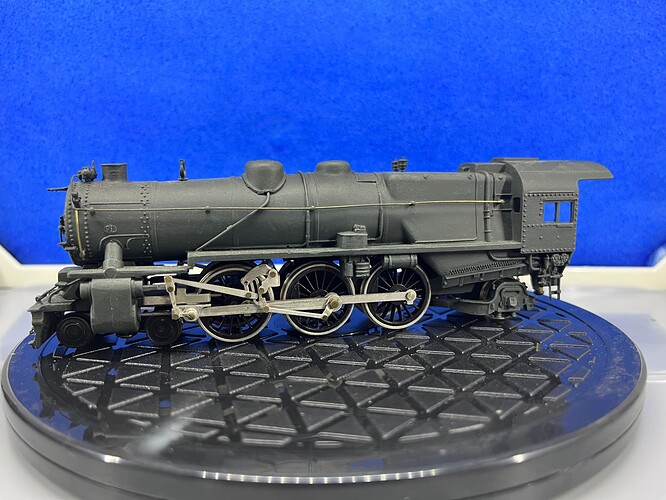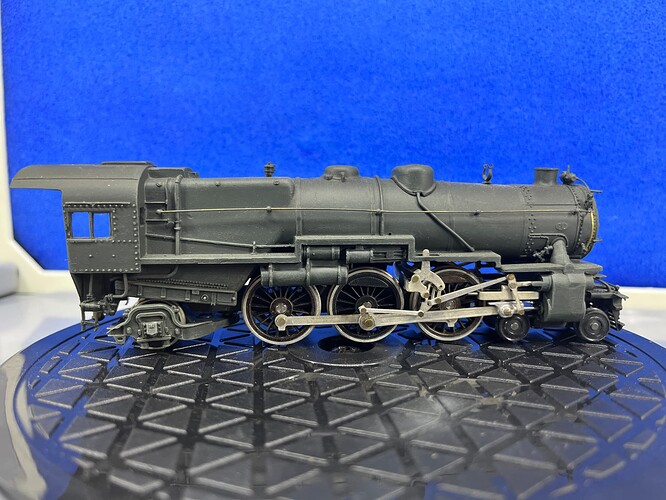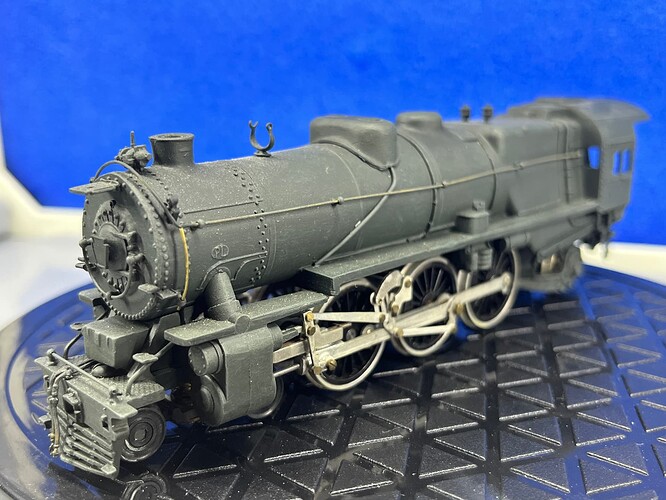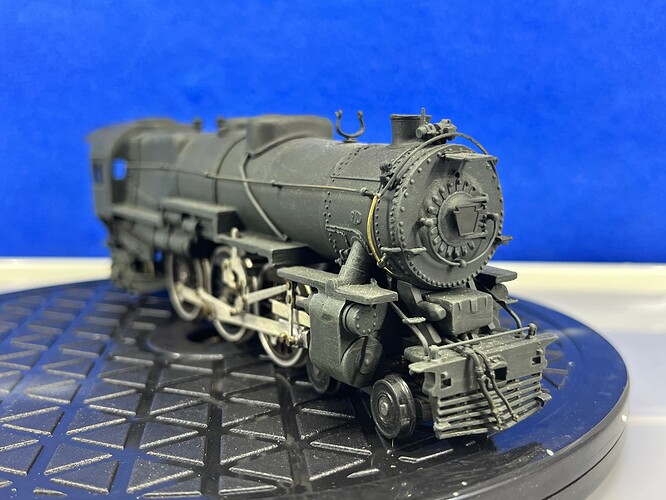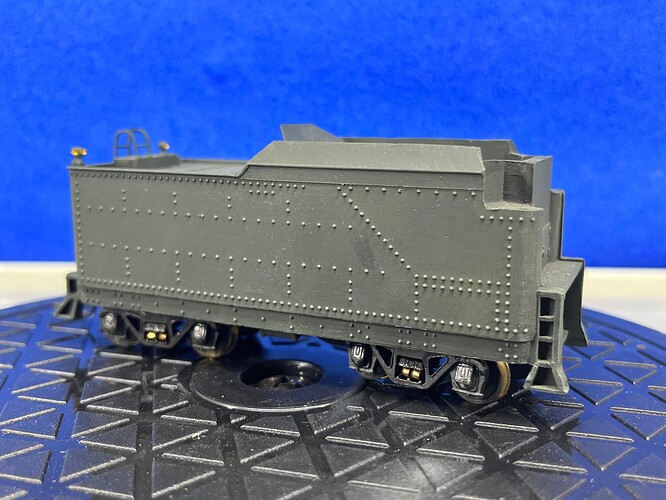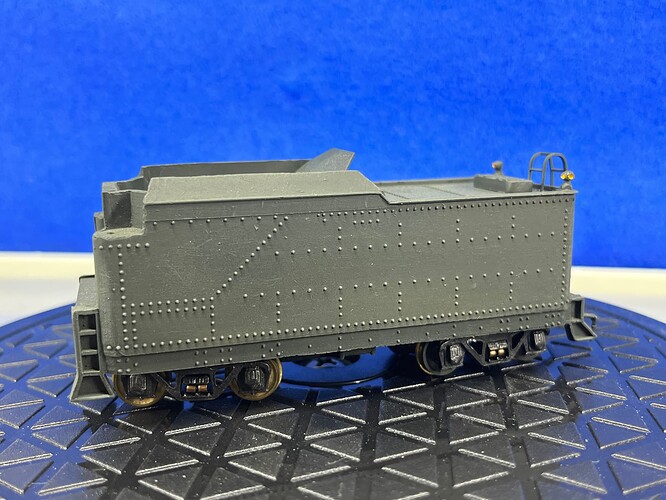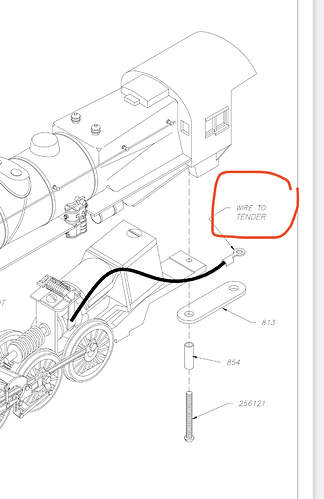Greetings,
I’m trying to find an approximate value of a metal (not brass) locomotive kit that I assembled many years ago. I got away from model RR but kept this engine and have decided it’s a shame for it to just sit in a box. But I don’t recall who made it or what to value it at.
Is there a good site to check for comparable current kits?
Thanks!
G
You really need to provide some images to get the kind of help you seek.
No problem. I was really looking for a good place to research, but if y’all can assist that’s even better!
It’s missing the bell and headlight which is a shame since I remember having upgraded those, now I can’t find either or the kit originals. Otherwise it’s complete to the best of my knowledge. Never really used just test run. HO scale.
Processing: 6A347B90-AE19-48A2-B57E-7A907E57B0B1.jpeg…
Uploading: B0948BD6-5346-4850-B83C-CC8F273C1458.jpeg…
Hi Greg,
I’m 99.9% certain that is a Bowser model, their Pennsylvania RR K4 Pacific. Do you recall if it has a can motor or the boxy open frame motor? Zinc or lead boiler?
How does it run?
I’ll ask about trying to price it. Maybe Michael [165SPC] will have an idea.
Yes, thank you, Bowser sounds familiar! I’m sure it wasn’t real expensive but to a teenager it was at the time. It’s from the late 80s if that gives an indication of the motor. I don’t remember what it looked like, I guess I could open it up if it’s highly relevant. I just remember it ran when I tested it. I have no way to test run it now. It may need some lube but shouldn’t be cruddy since it’s been packed all this time. As for the material I don’t know how to tell. I remember it being pretty hard, not soft like lead.
Hi Greg, the key to how much you’ll get for your engine is if it runs.
I looked around a little bit and it looks like that if it runs well, you can expect 100 to $200. Maybe less than $100 in some cases. The fact that it is not marked up for the Pennsylvania or any other railroad could be a selling point for freelance modelers. You could contact some of the big Railroad retailers like trainz.com and ask them. But unless you get really lucky, it seems like $200 would be a very good price you can expect. More likely on the lower and around up 100.
I was asking about the boiler material, they used to be lead. When lead became a concern, I think somewhere in the late 80s early 90s Bowser began to make them out of a zinc alloy. I’m not sure if Bowser ever swapped motors or if they always used the open frame rectangular type. The nice thing about Bowser engines is the combination of the heavy diecast boilers and that motor, they could pull the Chrome off of a bumper hitch.
Fred,
Thanks again for the valuable info!
I’ll look into a way to bench test the motor. It does look like an open motor, what I can glimpse from underneath the engine.
I’m not tying to retire off this just don’t want to get taken advantage of. I know it wasn’t an expensive engine even though it was to me as a teen.
frames.com seems to be picture frames , not railroad stuff - am I missing something?
You did not miss anything, but I sure did! Auto spell correct screwed me over. I said “trains”, and it printed “frames.”
Correction made.
Follow up question: the wire circled on the pic that goes to the tender. Where should it attach? Mine has gone missing along with the connector bar from the engine to tender. I can solder a new one to the motor but does it just go to the screw for the drawbar?
And good news! The motor just needed a touch of lube on the drive gear and it runs off a 9v jumped across the terminals. It is an open frame motor btw.
Greg that’s good news. Those open-frame Motors are like cockroaches, they’re hard to kill! Give them some juice, and they’ll probably be running long after humans have left this Earth.
I recall that the wire attaches to the tender with the same screw that holds the drawbar on. If I recall correctly, the drawbar is some sort of a fiber material. Flip over the tender and see if there is another screw hole next to the drawbar mount. I haven’t looked at a Bowser in awhile (even though I found my decapod last night) but I remember some logos oh, you attach the lead to the motor to the tender separate from the drawbar. Maybe that’s model diecast?
Fred the fact that is NOT marked Pennsy might be a bit of a negative because the boiler and pilot of the K4 are SO dinstivice that it can be nothing but the PRR K4.
However the proper lettering is something easily fixed by the new owner.
You are correct. The real “fair” value will be in how it runs $80 to $150 would be my call if it is a good runner.
Now for the “train show” bad news: probably $50 to $80 is a more realistic “street price.”
Typically on these old metal locos the drivers picked up one side of the circuit and the tender wheels picked up the other side. With a fibre drawbar connnecting between the two so that wire from the motor can connect anywhere there is a good electrical connection on the tender.
One caution: it is often easy to get one set of tender wheels turned around so the tender is then causing a dead short while there is actually nothing wrong with the engine at all. So first test without any tender using a jumper wire from the rail to that motor lead wire.
